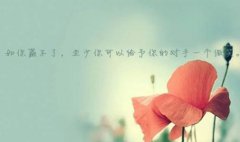Unit 11 On Becoming a Better Student
Key to the Exercises
Text comprehension
I. Decide which of the following best states the purpose of the essay.
A
(The author lists the qualities of a good learner so as to give students some guidelines on how to "become a better student" instead of merely describing the qualities of a good learner. )
II. Judge, according to the text, whether the following statements are true or false.
1. F (Refer to Paragraph 2. All the words and theories and techniques are of no use to students who yet have to open themselves with receptivity and to take it upon themselves to practice.)
2. F (Refer to Paragraph 4. Discovery is, according to Albert Szent-Gyorgyi, "looking at the same thing as everyone else but thinking something different," i.e., arriving at new understandings of things everyone sees.)
3. T (Refer to Paragraph 6. According to the author, most education discourages people from venturing far enough to take risks to make mistakes.)
4. F (Refer to Paragraph 7. Successful students do not expect to be spoon-fed, but take their own initiative.)
5. T (Refer to Paragraph 9. One should maintain his enthusiasm and learn not to push himself too hard in his pursuit of knowledge. Because patience is essential for success; besides, we need to develop other sides of our lives as well. As F. M. Alexander said, "Give up trying too hard, but never give up.")
III. Answer the following questions.
1. Refer to Paragraphs 2 and 3. According to the author, the genuine learning process rests with the students' own investigation, which is the best thing a teacher can guide his students to. She believes that learning is not so much the acquisition of information as it is an investigation.
2. Refer to Paragraph 5. Yes. According to the author, there is no shortcut in learning; persistence and discipline are required for a student to reach the very end and savor the full flavor of hard-won success.
3. Refer to Paragraph 6. It is a problem with the current educational approach that students are discouraged from venturing far enough to take risks to make mistakes. However, if people try different approaches and do things that have no precedence, they will surely make mistakes which, as the author argues, are the stepping stone of creative people.
4. It means one has to drop his prior knowledge so as to absorb new knowledge. If he refuses to do so, the old knowledge may hinder the assimilation of new knowledge. It also implies that one should learn to appreciate constructive criticism, for if he constantly fails to take criticism, he can never know where his weakness lies and grow out of it.
5. "Listen with your whole body" is to get yourself fully activated both cognitively and physically. That is to say, you have to be extremely attentive to what the teacher says instead of letting your mind wander and keeping your body inert.
IV. Explain in your own words the following sentences.
1. When they start school, children are curious and ready to try every means to explore the unknown. However, they end up losing the pioneering spirit after years of formal education.
2. "Advanced" learners are likely to make some mistakes. For example, they may become excessively satisfied with their progress or, on the contrary, put too much pressure on themselves to score further achievements.
Structural analysis of the text
The first two paragraphs are the introductory part, in which the writer attempts to explain what teaching and learning is meant to be. In the second part, Paragraphs 3 ?9, she discusses the various factors that make a good student. In the third part, she gives advice to the aspiring student.
The special devices the author uses to highlight her major points are some typographic devices -- the key words in bold to represent the most important qualities of a good student in the second part and the solid dark dot that introduces each of the nine tips in the third part.
Rhetorical features of the text
Here is an example: "We may even have expectations that they be endless repositories of skill and knowledge (Paragraph 1). The underlined part of the quoted sentence is an instance of the use of metaphorical language, an attempt to put across the idea that they have so much skill and knowledge that we can perpetually learn from them.
The author has cited four people in the text: Nobel Prize-winning physician Albert Szent-Gyorgyi (Paragraph 4); educator Neil Postman (Paragraph 6); Jim Spira, director of the Institute for Education Therapy in Berkeley, California (Paragraph 8); and F. M. Alexander of the Alexander technique (Paragraph 9). Citing the rightly chosen people certainly strengthens the writer's argument.
Vocabulary exercises
I. Explain the underlined part in each sentence in your own words.
1. view again at another time from a different perspective
2. with immense pleasant surprise
3. be provided with ready answers and ideas
4. do pioneering work
5. Don't let the knowledge you have acquired be a hindrance to your learning of something new
II. Fill in the blank in each sentence with a word taken from the box in its appropriate form.
1. precedence 2. stigma
3. proportional 4. strain
5. pertinent 6. injurious
7. relevance 8. therapy
III. Fill in the blanks with the appropriate forms of the given words.
1. substantial 2. motivation
3. committed 4. restrictions
5. subtle 6. thrilling
7. complacently 8. unprecedented
IV. Fill in the blank in each sentence with an appropriate phrasal verb or collocation taken from the text.
1. goes out of the way





